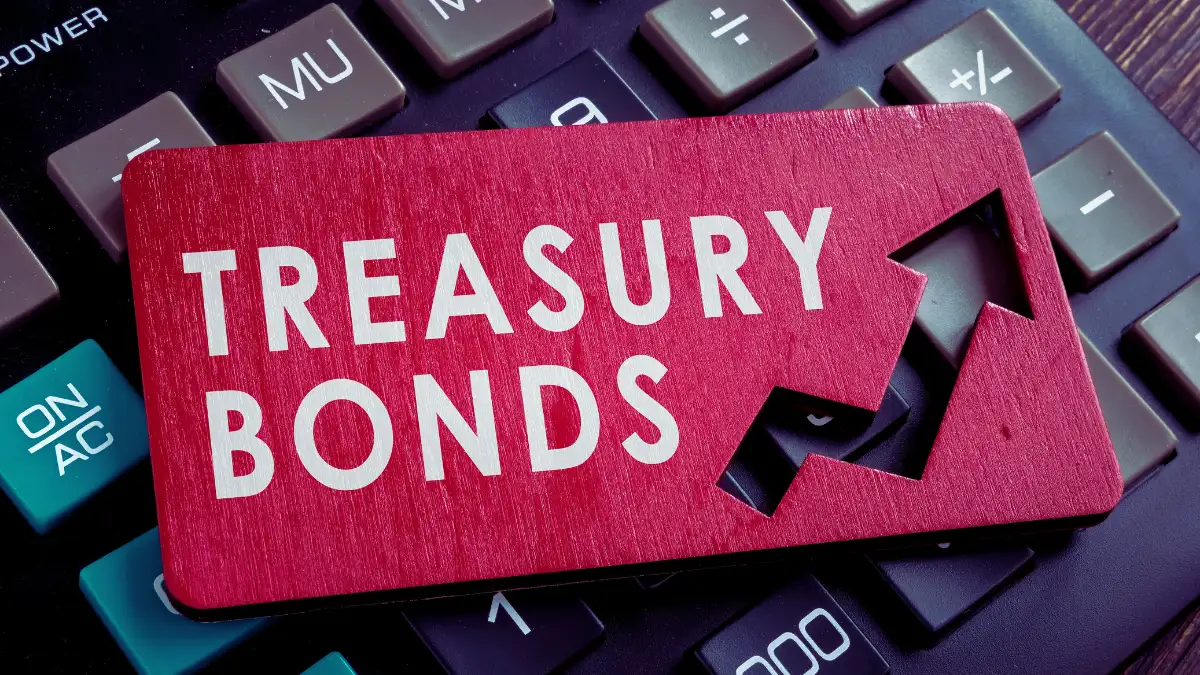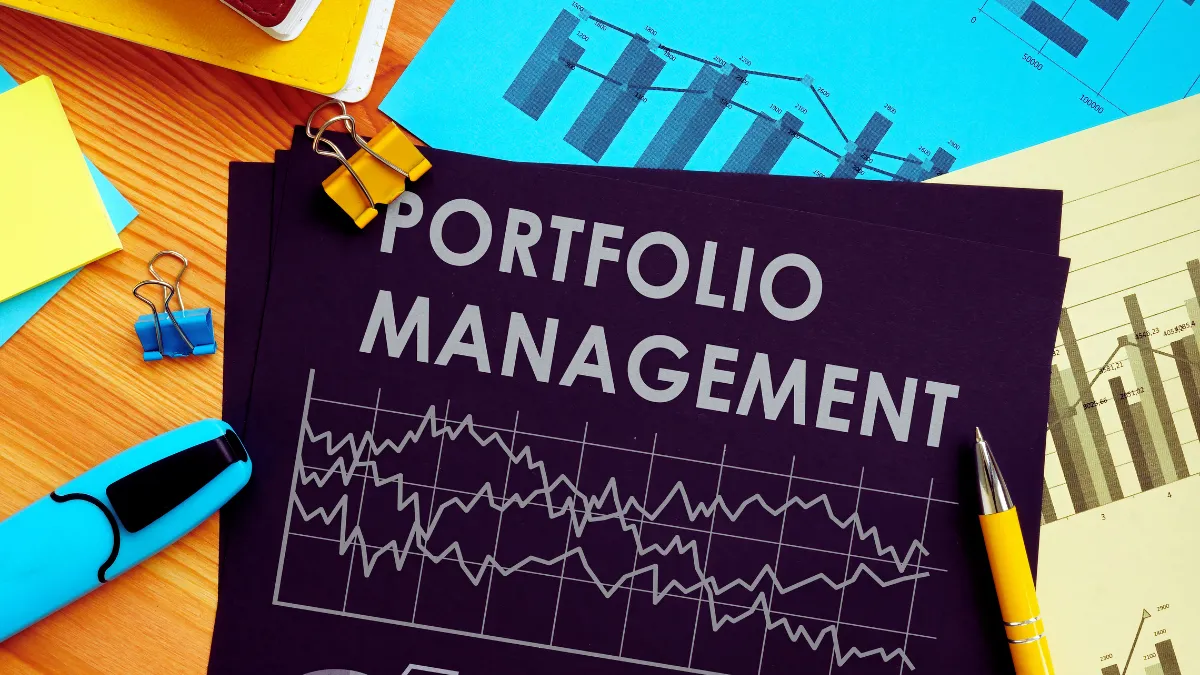Your portfolio lost 10% in two days. Your retirement account dropped faster than it did during COVID. And you’re wondering: What the hell just happened?
Here’s what’s going on. Three massive economic forces hit at once in 2025. They’re working together to shake up your investments like nothing you’ve seen before.
On April 2, 2025, President Trump announced huge new tariffs. The S&P 500 fell more than 10% in just two days. That’s the biggest drop since the pandemic.
But this isn’t just about tariffs. Three things are hitting your money at the same time:
The New Market Trifecta:
- New tariffs affect $2.2 trillion of imports—69% of everything we buy from other countries
- The government spent $1.8 trillion more than it made in 2025
- Interest rates on 30-year Treasury bonds jumped above 5% for the first time since 2007
These three forces feed off each other. When one gets worse, it makes the other two worse. That’s why your money can’t find stable ground.
Understanding the 2025 Market Trifecta

Think of the economy like a three-legged stool. When all three legs are stable, you can sit safely. But right now, all three legs are shaking at once.
The Penn Wharton Budget Model looked at Trump’s tariffs and found something alarming. They project these tariffs will cut our economy by 6% long-term and reduce wages by 5%. The average middle-class family will lose $22,000 over their lifetime.
That’s not a guess. That’s math based on how tariffs actually work.
The volatility is historic:
- The VIX (the “fear index”) and Treasury yield movements in spring 2025 were in the top 1% of all changes since 1990
- Treasury yields went from under 4% on Friday, April 4, to 4.5% by Tuesday, April 8
- Market uncertainty reached levels not seen since COVID shut everything down
We’re talking about bigger swings than almost any time in the last 35 years.
Force #1: Tariffs Reshaping Global Trade

Let’s break down what tariffs really mean for you and your money.
The Tariff Reality
On April 5, 2025, a 10% tariff hit almost every country we trade with. But that was just the baseline.
Here’s what actually happened:
- Tariffs on stuff from China jumped to 145%
- China fired back with 125% tariffs on American products
- The average tariff rate in America hit 27%—the highest in over 100 years
This isn’t a trade disagreement anymore. It’s a full trade war.
What This Costs You
The average American household will pay $1,300 more in 2025 because of tariffs. In 2026, that jumps to $1,600.
Where does this money go? Straight to higher prices. Companies don’t eat the cost of tariffs. They pass it to you.
Real-world impacts:
- U.S. soybean exports dropped 23% compared to last year
- China stopped buying American soybeans completely in September 2025
- Our trade deficit for the first half of 2025 was 38% higher than in 2024
And here’s something that sounds backwards: Tariffs were supposed to fix the trade deficit. Instead, it got worse. Companies rushed to import stuff before tariffs hit, making the problem bigger.
The Market Freakout
April 2 caused panic selling across the entire world. Every major stock market fell. But then something interesting happened.
On April 9, Trump announced a 90-day pause on most tariffs. Stocks jumped higher than they had in years.
The St. Louis Federal Reserve studied market volatility in spring 2025 and found this: The Economic Policy Uncertainty Index hit its highest level since COVID started. It literally doubled from where it was in January.
When uncertainty doubles, investors freeze. They stop buying. They stop building new factories. They stop hiring.
Trade Deals and Legal Battles
Not everyone is fighting. Some countries are making deals:
- The European Union agreed to buy $750 billion of American energy and invest $600 billion in the U.S. by 2028
- Japan said it’d invest $550 billion in America
- They’re building factories here to avoid tariffs
But the tariffs might not even be legal. In May 2025, federal judges ruled unanimously that the tariffs were illegal. Trump is appealing. If the courts say no, these tariffs could disappear overnight.
That uncertainty? It’s killing the market.
Force #2: Deficit Spending at Critical Levels

Now let’s talk about the government’s spending problem. Because it’s getting scary.
The Numbers Don’t Lie
The federal government’s deficit in 2025 is $1.9 trillion—6.2% of everything our economy produces.
To put that in perspective:
- By the end of January 2025, the deficit was already $838 billion—24% bigger than the same time last year
- Our national debt equals 100% of our entire economy right now
- By 2035, it’ll be 118% of GDP
The government is spending way more than it’s making. And it’s accelerating.
Why This Destroys Your Wealth
When the government borrows too much, bad things happen. Eventually, investors lose patience and demand higher interest rates to lend money to the government.
That makes everything more expensive:
- Mortgages
- Car loans
- Business loans
- Credit cards
Here’s the scary math: For every 1% increase in debt compared to our economy, interest rates go up by 2 basis points. Small changes add up fast.
Where Your Tax Dollars Go
Three things are eating up the budget:
Social Security: Spending went up by $111 billion in the first 11 months of 2025
Interest payments: We paid $90 billion more in interest on our debt. We’re paying $90 billion extra just because we borrowed too much.
Tax cuts: Congress passed a bill with huge tax cuts, but no plan to pay for them. That makes the deficit even bigger.
The Bond Market Warning
Remember what happened in the UK? Prime Minister Liz Truss announced big spending with no way to pay for it. The bond market freaked out. She lost her job in 44 days.
Experts worry the same thing could happen in America. If bond investors panic, interest rates could spike. That would hurt stocks, housing, and the dollar all at once.
The 30-year Treasury yield jumped 0.7% to hit 5% since early April. That’s the market saying “we’re worried.”
Force #3: Treasury Yields Signal Market Stress

Let’s break down what’s happening with bonds. This is important because bonds affect everything—your mortgage, your car loan, your retirement account.
Where Yields Are Now
Current situation:
- The 10-year Treasury yield was 4.04% on October 10, 2025
- The 30-year Treasury yield broke above 5%—something we haven’t seen since 2007
- Most experts think the 10-year yield will stay between 3.5% and 5% for the rest of 2025
That might not sound like much. But it’s way higher than it was. And it’s bouncing around fast.
What’s Driving Yields Up
Two main drivers: stronger growth expectations and huge uncertainty about what comes next.
Nobody knows what Trump will do tomorrow. Nobody knows if tariffs will stick. Nobody knows if China will retaliate more.
Look at this spread: The difference between 5-year and 30-year Treasury yields is 120 basis points (1.2%)—the widest gap since 2021.
What does that mean? Investors want higher pay to lend money long-term because they’re worried about inflation and the dollar losing value.
When Bonds Stop Working
The MOVE index measures how much Treasury bonds are jumping around. It spiked hard in April when Trump announced his tariff plans.
When bonds get volatile, markets get messy:
- Banks and trading firms pulled back from risk-taking when everything was moving so fast
- Liquidity dried up
- Prices swung wildly
Here’s the worst part: Stocks and bonds both fell at the same time. Usually, when stocks fall, bonds go up. That’s why people own both. But in 2025, both dropped together.
Your diversification didn’t work.
How The New Trifecta is Driving Market Volatility
When tariffs, deficits, and yields come together, they don’t just add up. They multiply the damage. Here’s how.
1. The Dangerous Feedback Loop Between All Three Forces

This is the scary part. Watch how these forces feed off each other:
The Death Spiral:
- Tariffs slow down the economy
- Companies make less money
- The government collects less tax
- The deficit grows from 6% of GDP in 2025 to 6.9% by 2027
- A bigger deficit means more borrowing
- More bonds for sale means prices fall and yields rise
- Higher yields make it more expensive for the government to borrow
- That makes the deficit even worse
- Back to step 1
See the loop? It feeds itself.
The confidence collapse:
- Consumer confidence fell to a two-year low of 57.9
- When people feel worried, they stop spending
- That slows the economy more
- Which makes everything worse
Business investment dies:
- Rising uncertainty cut business investment by 4.4% in 2025
- Companies aren’t building new factories
- They’re waiting to see what happens
- But waiting makes the problem worse
Even the dollar is broken. The dollar has dropped 7% since the trade war started. Usually, when a country puts up tariffs, its currency gets stronger. Not this time.
2. Real-World Impact on Your Portfolio

Let’s talk about what this means for your actual money. Because these aren’t just numbers on a screen.
Your stock account took a beating:
- The S&P 500 dropped 10.1% from its February high by March 13
- If you had $100,000 in stocks, you lost $10,100 in a month
- Then it came back: The S&P 500 turned positive for the year on May 13 after Trump paused tariffs for 90 days
- By Q3, stocks were actually 6% higher than the February peak
That’s a wild ride. And it’s not over.
Your bonds had a weird year:
- Even though yields went up (which usually hurts bonds), the Bloomberg Treasury Index still returned 2.1% because of interest payments
- Long-term bonds lost money
- Short-term bonds made a little
- But bonds didn’t protect you when stocks fell
Tech got destroyed:
- Earnings estimates for the S&P 500 fell from $270 per share to around $255-260
- The Magnificent 7 stocks (Apple, Microsoft, Amazon, etc.) fell 8.4%
- The tech sector overall dropped 5.6%
Gold was the hero:
- Gold has gone up 13% since January 1, 2025
- When everything else is falling, gold often goes up
- It’s the ultimate safe place
3. What the Smartest Money Managers Are Doing

The big firms managing billions of dollars have changed their game. Here’s what they see coming.
Growth forecasts are tanking:
- BlackRock’s bond team now expects 0% GDP growth in 2025 and inflation at 3.8%
- Goldman Sachs cut their growth forecast by 0.7% to just 1.7%
- J.P. Morgan thinks global growth will only be 1.4% in Q4 2025, down from 2.1% at the year start
Zero growth with high inflation is the worst combination possible.
Recession odds are rising:
- Morningstar’s analysts say there’s a 40-50% chance of recession in the next year
- That’s a coin flip
- Unemployment will probably rise from 4.2% to 4.5% in 2026
What the pros are buying:
- BlackRock moved to neutral on U.S. stocks and prefers short-term Treasury bonds
- They’re avoiding long-term bonds because of deficit and inflation worries
- Most analysts expect one or two rate cuts by the Fed in 2025, starting in September at the earliest
Morgan Stanley got so nervous that they shortened their investment timeline to just three months. Usually, they think 6-12 months ahead.
4. Proven Strategies to Protect Your Portfolio

Okay, enough bad news. What should you actually do with your money?
Go defensive with stocks:
Focus on low volatility, high quality, and dividend-paying stocks. Look for companies that:
- Have strong balance sheets
- Don’t have a lot of debt
- Can raise prices when costs go up
- Pay steady dividends
Sectors that hold up:
- Healthcare (people still need doctors)
- Utilities (everyone needs electricity)
- Consumer staples (toilet paper, food, soap)
Over the last 10 years, dividend growth stocks fell less than the S&P 500 during downturns.
Fix your bonds:
Keep your average bond portfolio at 6 years or less. That’s the safe zone.
Why? Short-term bonds don’t get hurt as much when rates rise.
Here’s good news: Starting yields of 4-5% give you a big cushion. In fact, 88% of bond returns over five years can be predicted by the starting yield.
Translation: If you buy bonds yielding 4-5% today, that’s roughly what you’ll earn even if rates bounce around.
Add these to your mix:
- Municipal bonds to diversify away from stocks and Treasury bonds
- Gold—it works better than bonds as a diversifier right now
- Maybe 5-10% of your portfolio in gold
Look beyond America:
International stocks in Canada, Australia, and Europe might do better. Why?
- Europe is spending more on defense
- Canada and Australia benefit when commodity prices rise
- Emerging market stocks returned 9% so far this year in dollars, 8% better than the S&P 500
Things to avoid right now:
- Companies that import a lot from China
- Long-term bonds if yields go above 4.8%
- Any company with too much debt
- Chasing last year’s winners
- Panic selling when markets drop
5. Critical Indicators to Monitor Right Now

You can’t watch every piece of economic news. Focus on these five things.
The 10-year Treasury yield (most important):
If the 10-year stays below 4.8%, things should be okay. If it goes above 4.8% and stays there, expect trouble for stocks, housing, and the dollar.
That’s your line in the sand. Check it once a week.
Tariff policy:
Trump keeps threatening new tariffs—50% on Europe, higher rates on Apple products if they don’t manufacture here.
Watch for:
- New tariff announcements
- Trade deals are getting finalized
- Court rulings on whether tariffs are legal
Budget battles:
The Senate is arguing about the tax bill. Changes to the bill could trigger Treasury yield volatility.
Debt ceiling fights make markets crazy. Watch for those.
Consumer health:
- Consumer confidence is at 57.9, a two-year low
- People expect inflation of 4.9% over the next year
- Monthly jobs reports show whether people are losing work
The fear gauge:
The VIX measures expected volatility. When it’s above 25, markets are scared. It hit 25 in March 2025. Normal is 12-15.
Set up alerts for:
- 10-year Treasury yield crossing 4.8%
- VIX above 25
- Major Fed announcements
Check these once a week. Not every day. Don’t drive yourself crazy.
What You Need to Do This Week

The market isn’t going back to normal anytime soon. These three forces—tariffs, deficits, and yields—will keep causing volatility through 2025 and into 2026.
You can’t predict what Trump will tweet tomorrow. You can’t predict if Congress will pass a budget. But you can control your portfolio.
Your action plan:
- Look at your current mix. Are you too heavy in stocks? Too heavy in tech? Too much in long-term bonds?
- Add some defense. Move 10-20% into short-term bonds, dividend stocks, or gold.
- Set up alerts for the 10-year Treasury yield and VIX.
- Talk to a financial advisor if you’re not sure what to do. This isn’t the time to guess.
- Stop checking your portfolio every day. It’ll drive you crazy. Check once a week max.
The data is clear. These policies could cut the economy by 6% and wages by 5% long-term. This is real. This isn’t fear-mongering.
But here’s the good news: You now know what’s happening. You understand why your portfolio is jumping around. And you have a plan.
Most people are still confused. You’re ahead of them.
Take action this week. Adjust your portfolio. Protect what you’ve built.
Because of this volatility? It’s just getting started.

